Detailed introduction of Moholy-Nagy University of Art and Design:
Introduction and Overview
Geographical Location: Located in Budapest, the capital of Hungary.
Student Size: The exact total number of students has not been found yet, but according to its historical data, the number of registered students in 1896 was 120, and the number of students increased to 280 in 1952. The current size should have expanded.
International Exchange: Actively carry out international cooperation, and have exchange programs with many foreign colleges and institutions, attracting students and scholars from different countries and regions, providing students with a broad international perspective and exchange opportunities.
History and Establishment Time
The predecessor of the university was the Hungarian Royal State School of Arts and Crafts, which was established in 1880. It was upgraded to the Academy of Arts and Crafts in 1946, and obtained university status in 1971 but retained the name of the academy. It carried out a series of reforms in 1982, obtained certification in 1998, and was officially renamed Moholy-Nagy University of Art and Design in 2006. Design.
School Strength
Faculty: We have a group of professors and experts with profound attainments in the fields of art and design. They not only have rich teaching experience, but also have outstanding creations and research results in their respective professional fields, and can provide students with professional guidance and cutting-edge academic vision.
Subjects and majors: We offer bachelor's, master's and doctoral degree courses covering a variety of fields such as art, architecture, design, media and theory, including architecture, product design, silicate design, textile design, visual communication (graphic design, video, animation, photography) and other majors. The disciplines are comprehensive and keep up with the development trend of the times, meeting the professional learning needs of different students.
Teaching facilities: The school is equipped with advanced teaching facilities, such as Techpark It has the most advanced workshop and studio facilities, providing students with places and equipment for experiments, prototyping, media content development and professional production, which helps students combine theoretical knowledge with practice and improve professional skills.
Nature of the institution
Public university.
Educational philosophy
Committed to cultivating artists, designers and creators who can break mediocrity and have innovative spirit, focusing on cultivating students' comprehensive qualities through mentor guidance, creating a value-driven art and design ecosystem, emphasizing the combination of learning, research and application to meet global challenges and have a positive impact.
Key laboratories and disciplines
Key disciplines: Visual communication, product design, architectural design and other disciplines occupy an important position in the development of the school, with a high level of teaching and research, and have a certain influence in the field of art and design in Hungary and even Europe, providing students with high-quality education Resources and practical opportunities have cultivated many outstanding professionals.
Key Laboratory: The school's Innovation Center is an institutional unit responsible for research and development. It is an incubator for design solutions that are useful to society. It conducts long-term research and market cooperation. Students and teachers can participate in it, providing strong support for promoting discipline development and innovative practice.
Department Settings
There are departments such as architecture, product design, silicate design, textile design, and visual communication, as well as related departments such as teacher training, management training, and doctoral research.
Ranking
The specific ranking of the school in the international comprehensive university rankings has not yet been found, but as one of the important visual cultural institutions in Europe, it has a high reputation and professional recognition in the field of art and design.
Expenses
Tuition fees: Tuition fees for different majors vary. The specific amount can be found on the school's official website or consult the school's admissions department.
Living expenses: The cost of living in Budapest is relatively moderate, with monthly living expenses ranging from about 800-1200 euros, including accommodation, food, transportation and other daily expenses.
Campus
Campus facilities: The main campus is located in Zugligeti út. 9/25 in Budapest. The campus has teaching buildings, studios, libraries, galleries and other facilities, providing good conditions for students' learning, creation and research. Among them, the school's official gallery Tölgyfa Galéra has been open to the public since 1987, displaying the excellent works of teachers and students, promoting artistic exchanges and cultural dissemination.
Campus environment: The campus has a beautiful environment and a strong cultural atmosphere. It is close to many parks, fitness clubs and other places, providing students with a good place for leisure and relaxation, and it is also conducive to inspiring students' creative inspiration.
-
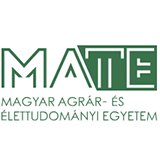
Hungarian University of Agriculture and Life Sciences
-
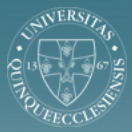
University of Pécs
-

Budapest University of Technology and Economics
-
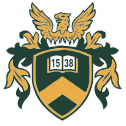
University of Debrecen
-
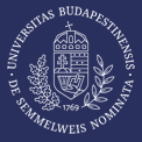
Semmelweis University
-
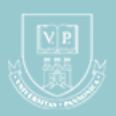
University of Pannonia
-
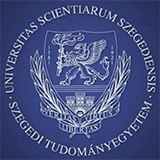
University of Szeged
-
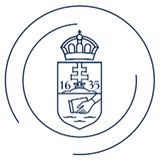
Eötvös Loránd University
-

University of Sopron
-
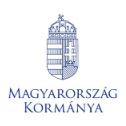
University of Miskolc
-

Mesoamerican University
-

Istmo University
-

Mariano Galvez University of Guatemala
-

Regional University of Guatemala
-

Galileo University
-

Francisco Marroquín University
-

Rafael Landívar University
-

University of the Valley of Guatemala
-

University of San Carlos of Guatemala
-

Technological Institute of Tlaxcala Plateau
-

Golfo University
-

Technological University of South Sonora
-

Technological University of Huejotzingo
-

Tizimín Institute of Technology
-

Chilpancingo Institute of Technology

